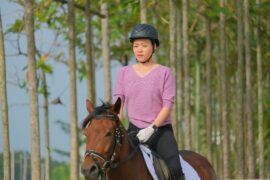Welcome to the fifth article in our series on situational awareness to protect children. Building on our previous discussion about open communication, this article will focus on identifying unsafe environments. Recognizing and avoiding these environments is crucial in protecting children from predatory groomers.
Identifying Unsafe Environments
Unsafe environments can be found both online and offline. These are places where children may be exposed to potential harm, including grooming and exploitation. Understanding how to identify these environments helps parents and guardians take proactive measures to protect their children.
Unsafe Environments: Physical Spaces
In physical spaces, such as schools, parks, and recreational facilities, look for signs that may indicate an unsafe environment. These include lack of supervision, poorly lit areas, and unfamiliar adults showing excessive interest in children. Parents and guardians, familiarize yourselves with the places your children frequent and ensure they are adequately supervised and secure.
Practical Tips
- Supervision: Always supervise your children and include other trusted adults when in public spaces.
- Environmental Checks: Regularly inspect the physical environments your child spends time in for potential risks.
- Teach Awareness: Teach your child to be aware of their surroundings and to identify and avoid unsafe areas.
Unsafe Environments: Online Spaces
Online, unsafe environments can be more challenging to identify. Social media platforms, gaming sites, and chat rooms are common places where predators seek to groom children. Be aware of the digital spaces your children visit and monitor their interactions. Look for red flags such as secretive behavior, excessive screen time, and interactions with unknown individuals.
Practical Tips
- Monitor Online Activity: Regularly monitor your child’s online activity and the platforms they use.
- Privacy Settings: Activate privacy settings on all of your child’s online accounts.
- Teach Cyber Safety: Educate your child on the importance of not sharing personal information online.
Creating Safe Spaces
Parents and guardians can create safe environments by establishing clear rules and boundaries. Encourage children to stay in well-supervised areas and to avoid isolated or poorly monitored spaces. Online, set guidelines for internet use, including time limits and approved websites or apps.
Practical Tips
- Establish Rules: Create and enforce clear rules about where your child can go and with whom.
- Safe Zones: Designate specific safe zones where your child knows they are secure.
- Regular Check-Ins: Establish a routine for regular check-ins to ensure your child’s safety.
Conclusion
Identifying unsafe environments is a vital step in protecting children from potential harm. Stay tuned for the next article, which will focus on empowering children to say no. By staying vigilant and proactive, we can create safer spaces for our children
Resources and Support Systems
- National Center for Missing & Exploited Children (NCMEC) – missingkids.org, 1-800-THE-LOST (1-800-843-5678)
- Rape, Abuse & Incest National Network (RAINN) – rainn.org, 1-800-656-HOPE (1-800-656-4673)
- Stop It Now! – stopitnow.org, 1-888-PREVENT (1-888-773-8368)
- Darkness to Light – d2l.org, 1-866-FOR-LIGHT (1-866-367-5444)
- Childhelp National Child Abuse Hotline – 1-800-4-A-CHILD (1-800-422-4453)
- CyberTipline – cybertipline.com, 1-800-THE-LOST (1-800-843-5678)
- National Human Trafficking Hotline – 1-888-373-7888
- Safe to Compete – safecompete.org
Unapologetically for the children™


